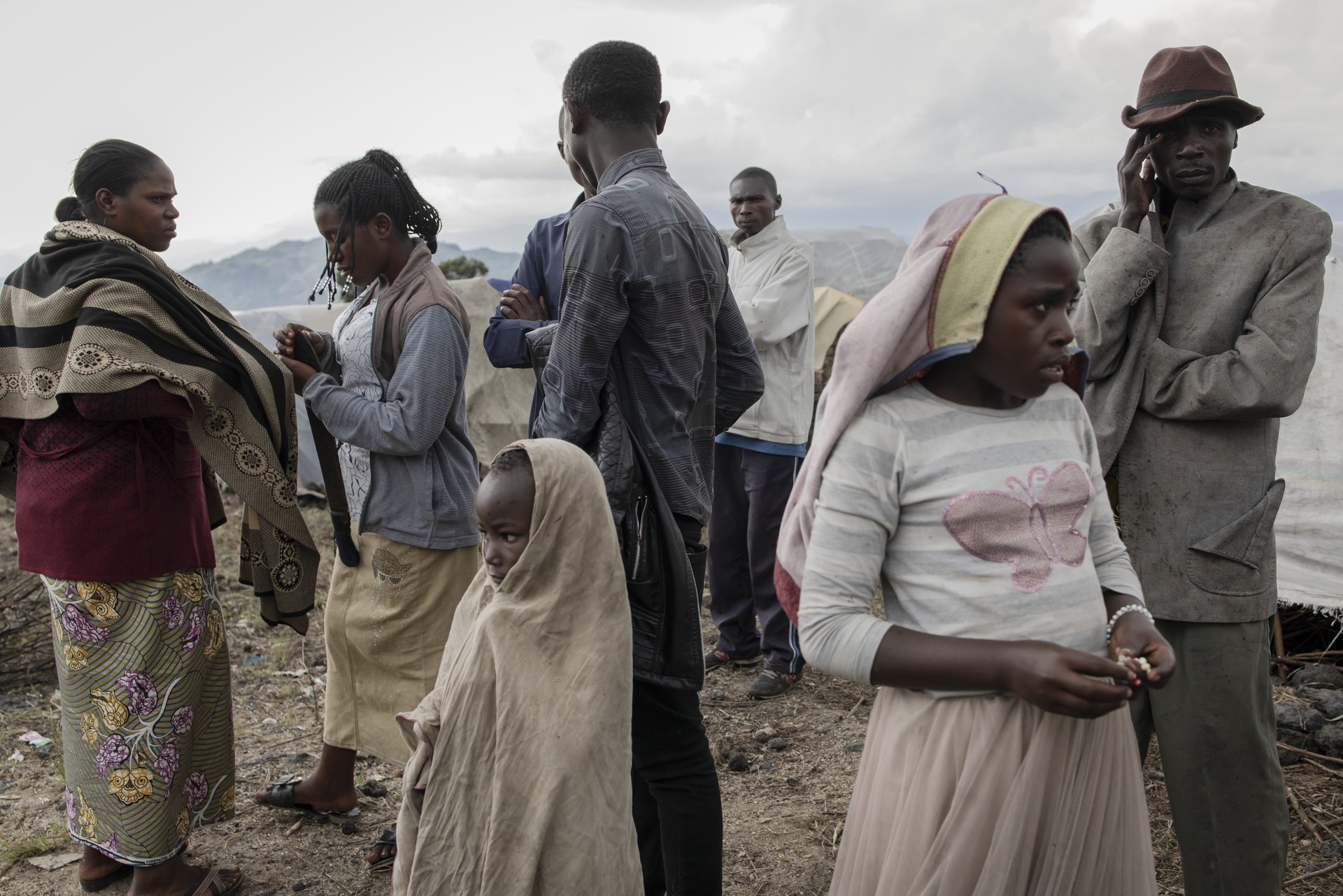
Humanitarian and fragile settings include areas affected by armed conflicts, natural disasters and other emergencies. In 2018 at least 415 million children and adolescents under age 18 years were living in such areas worldwide. The number of displaced adolescents increased from 13 million in 2009 to 19 million in 2017. Globally, the worst rates of preventable mortality and morbidity among adolescents occur in humanitarian and fragile settings. Many health burdens increase in such contexts because governance and health infrastructures break down, and protective social and health services become much less accessible.

On 2 March 2023 Bahati Munirakiza (second from left) and Joseph Mboneza (right), stand in front of their shelters in a camp for internally displaced people in Bulengo, about 15 kilometres from Goma in the east of the Democratic Republic of the Congo. A group in the east of the country has taken up arms again, disrupting the already fragile humanitarian situation in the area. Since early April 2022, almost 900,000 people living in the territory of Nyiragongo, Rutshuru and Masisi have been forced to flee their homes to seek refuge in villages north and west of the city of Goma and other communities in the territory of Lubero.
In such crises key concerns for adolescent health and well-being include the following:
malnutrition, for example, wasting, underweight or micronutrient deficiencies;
inadequate assistance, treatment and care of adolescents with disabilities or injuries;
violence, for example, as child soldiers, who are primarily boys, and survivors of sexual exploitation and abuse (including early or forced marriage and FGM), who are primarily girls and women;
HIV and other STIs, early pregnancy, maternal conditions, unsafe abortion and general SRH needs, such as access to condoms and other forms of contraception;
Water and sanitation needs, such as materials and facilities for management of menstrual hygiene;
mental health problems, such as anxiety and trauma;
interrupted supply of medicines for chronic conditions, such as asthma and type 1 diabetes;
interrupted education; and
separation from protective familial or peer networks, which adds to the risk of violence, abuse and exploitation.


